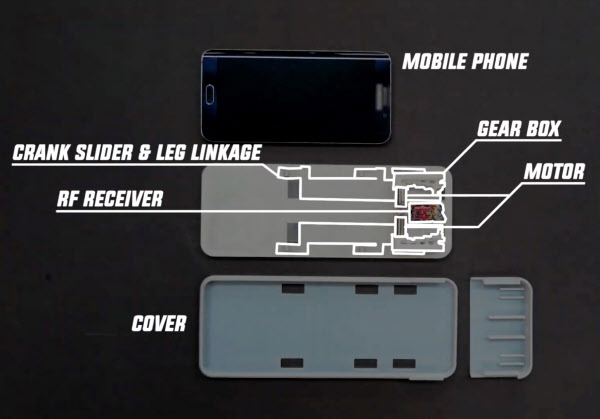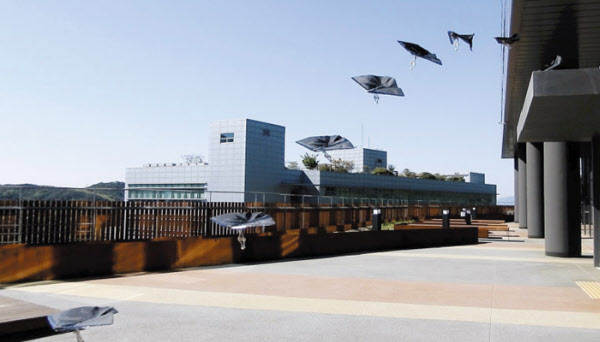Department News
[The Chosun Ilbo] Prof. Kyu-Jin Cho’s Research Team Develops Mobile Phone Case with Robotic Legs
[Science Cafe] A Phone Case for the Lazy People
SNU Research Team Develops Mobile Phone Case with Robotic

CaseCrawler, equipped with 6 legs the bottom of the case. The internal motor allows it to move at the speed of 21cm per second./SNU

A mobile phone case that moves is a structure of a casecrawler. The motor (center right) forces six legs to bend and unfold./SNU
Imagine you are lying the couch, and your phone falls down to where your hand cannot reach. You don’t want to get up and pick it up. Can’t your phone come to you?
A Korean research team took inspiration from a fantasy of lazy people everywhere and made it into reality: a phone turning into a legged robot.
Professor Kyu-Jin Cho of Seoul National University Dept. of Mechanical Engineering and his team introduced ‘CaseCrawler,’ a robot that moves with 6 legs, the October issue of Robotics and Automation Letters published by IEEE.
◇ Cockroach-like robot holding a phone
Prof. Cho has studied robotic technology inspired by nature, such as robots with wings that resemble those of a ladybug. This research is similar. “We were developing robots that are able to run with flattened legs like a cockroach, then we decided to apply that to a mobile phone case,” said Prof. Cho.
CaseCrawler has six legs, which unfold when the motor is turned. The robot weighs 23g and is able to move 21cm at a second. The maximum weight of the phone it can withstand is 300g, meaning it can hold up to 13 times its weight.

'CaseCrawler' applies a cockroach-like flat robot (pictured in the box below) to a mobile phone case./SNU
◇ Course-correcting with the help of sensors
CaseCrawler has a width of 24mm and weights 82g. It is larger than a normal mobile phone case, but the research team expects it can be reduced to the size of an actual phone case. Also, if it can be powered by the phone itself instead of a separate battery, it would become lighter.
“Currently, CaseCrawler isn’t very smart,” said Prof. Cho. “But we could make it move and correct its course with the help of sensors installed in the phone.” He plans to study making other ordinary objects move in the same way.
◇ A flying ladybug-like robot
Prof. Cho’s research team has developed robots that take inspiration from insects such as cockroaches, caterpillars, and fleas. Last April, their research a ladybug-like flying robot was published Science Robotics.

A robot with ladybug-like wings flying. /SNU
The wings of an insect have thin wing veins that resemble plant veins, where body fluids and nerve systems are located. The research team took inspiration from the fact that a ladybug’s wing veins operate like springs.
“The elliptical structure of the wing vein works like a spring. It locks down the wing, then later releases it,” said Prof. Cho. “So we created the same structure the edge of the robot’s wing to give it elastic energy.”
‘CaseCrawler,’ attaching a cockroach-like flat robot to a phone case, making it move./SNU
Source : http://news.chosun.com/site/data/html_dir/2020/08/12/2020081200705.html

